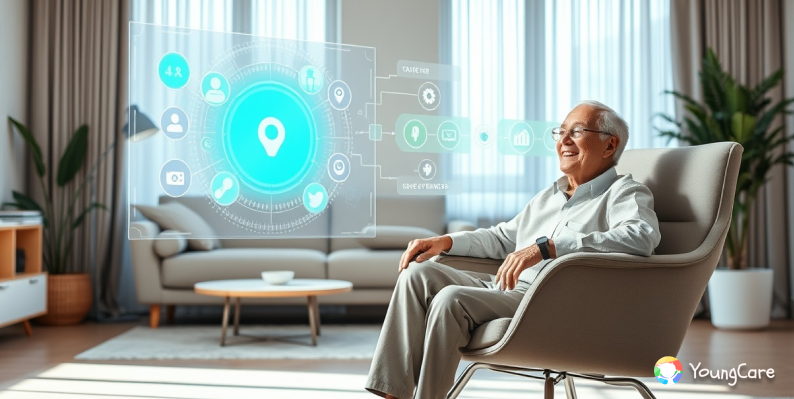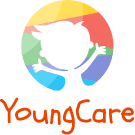The caregiving world is becoming increasingly complex, with millions of families managing health, nutrition, and safety responsibilities daily. Smart checklists—evolved from simple paper logs—now integrate automation, AI, and collaboration tools to streamline care. These digital systems enhance efficiency, ensure consistency, and reduce caregiver burnout. However, challenges such as privacy, accessibility, and over-reliance must be addressed for sustainable adoption. With future innovations like AI personalization and wearable integration, smart checklists are set to redefine caregiving organization and outcomes.
The Origin and Evolution of Caregiver Checklists

The concept of smart checklists for caregivers has evolved from simple paper forms into advanced digital tools that transform caregiving efficiency. Originally used in aviation and medicine to prevent critical errors, checklists have become essential in caregiver organization and safety management. Modern digital caregiver checklists go beyond tracking medications and meals—they are now interactive, mobile, and customizable, helping caregivers automate routines and manage complex care tasks effortlessly.
With over 53 million family caregivers in the U.S. providing unpaid care in 2020, the adoption of smart caregiving technology has become vital for improving accuracy, reducing burnout, and enhancing overall care quality.
Core Ideas Why Smart Checklists Matter

Smart checklists for caregivers are more than simple to-do lists—they are intelligent caregiving systems designed to enhance safety, communication, and care quality. They help ensure consistency and safety by establishing standardized routines that minimize risks such as missed medications or skipped hygiene tasks. These digital caregiver checklists also facilitate communication between caregivers, family members, and healthcare professionals, ensuring everyone remains aligned on care plans. Additionally, they reduce cognitive load, allowing caregivers to focus more on meaningful engagement and reducing the risk of burnout.
With real-time monitoring and activity logging features, caregivers can easily track routines and share updates for doctor reviews or family insights. Research shows that structured caregiver checklists can reduce medication errors by up to 50% and significantly improve adherence to care routines—ultimately leading to better patient outcomes and more efficient care management.
Real-World Applications and Stories

A caregiver shared her experience of using smart checklists for caregivers while caring for her aging parents, expressing immense relief at how these tools improved care coordination among family members. Digital caregiver checklists help organize daily care routines, simplify communication, and reduce errors. Practical applications of smart caregiver checklists include daily care tracking for personal hygiene, medication schedules, and nutrition logs through customizable templates. They also support home safety audits, allowing caregivers to identify and eliminate potential hazards efficiently. Through care team coordination, multiple caregivers can use real-time activity logging to stay informed and aligned on daily tasks.
Furthermore, specialized care templates tailored for conditions such as dementia care, mobility assistance, and infection control significantly enhance overall care quality. These real-world uses demonstrate how AI-powered caregiving tools can transform traditional caregiving into a more organized, collaborative, and effective process.
Challenges and Limitations

While smart checklists for caregivers offer numerous advantages, they also come with certain challenges that must be addressed for successful implementation. One key issue is customization vs. standardization — caregiving needs are often unique, and generic caregiver checklists may not capture the specific nuances of each situation. Another challenge is technology barriers, as not all caregivers possess the technical skills or resources to use digital caregiving tools effectively. Privacy concerns also arise when sensitive health information is shared across devices or platforms, making data protection a top priority.
Lastly, checklist fatigue can occur when caregivers become overly focused on ticking off tasks rather than providing quality, compassionate care. To overcome these limitations, it’s essential to balance automation with empathy, ensuring that AI-powered caregiving tools enhance—not replace—the human touch in caregiving.
Emerging Trends and Future Possibilities

The future of smart checklists for caregivers looks promising, with technology continuously improving the caregiving experience. Here are the key trends shaping the next phase of digital caregiving:
- Integration with Wearables and IoT Devices
Modern wearables and IoT devices can automatically track and log vital health metrics, syncing them with smart checklists for better accuracy and real-time monitoring. This helps caregivers make data-driven decisions and enhances patient safety. - AI-Powered Personalization
Artificial intelligence (AI) enables smart checklists to adapt to individual caregiving needs. Through AI-driven personalization, caregivers can receive custom reminders, predictive alerts, and recommendations based on patient health patterns, improving care quality and efficiency. - Voice-Activated Assistants
With voice-enabled caregiving tools, caregivers can manage tasks hands-free while attending to patients. These AI-powered assistants increase convenience and reduce the need for manual updates, allowing caregivers to multitask effectively. - Enhanced Collaboration Tools
Future care coordination platforms will focus on secure communication and seamless data sharing among caregivers, family members, and healthcare professionals. This fosters transparency, teamwork, and continuity of care across all participants.
Conclusion
Smart checklists are more than digital to-do lists—they are powerful caregiving allies. By combining automation, structure, and communication, they help caregivers manage routines efficiently while ensuring safety and empathy. The integration of AI, IoT, and voice assistants will only strengthen this ecosystem, making caregiving smoother and more collaborative.
Caregivers who embrace this technology will find more time to focus on what truly matters—personal connection and quality care.
Ready to modernize your caregiving process? Explore AI-powered caregiving tools that simplify daily care, improve collaboration, and enhance safety.

